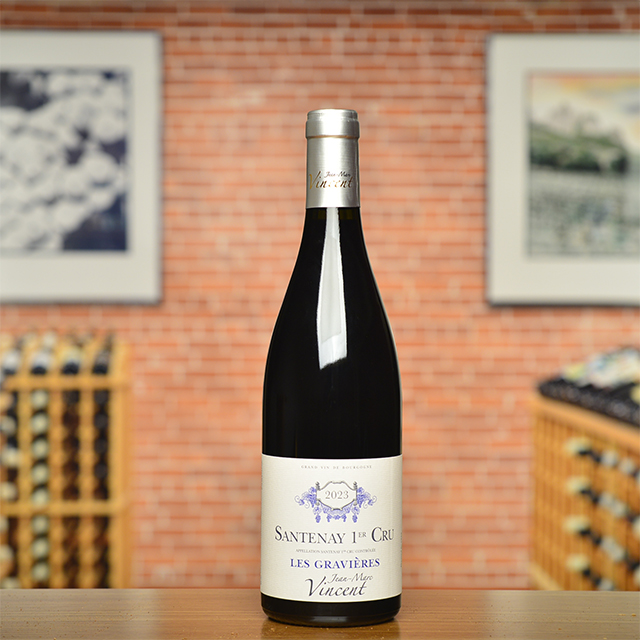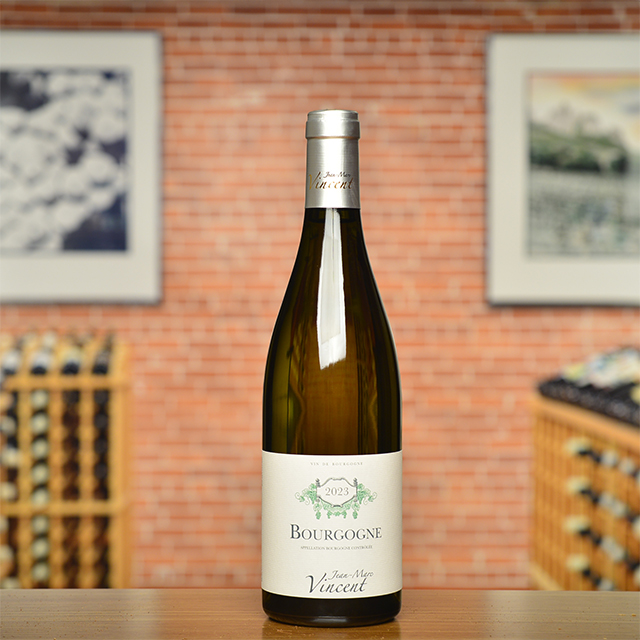Notify me
2021 Chinon Rosé
Charles Joguet

Kevin Fontaine
The second rosé ever Kermit imported—Tempier’s Bandol beat it by a few months back in 1978—this cuvée from Charles Joguet is among the quintessential wines of the KLWM portfolio. Breathing in the beautiful aromas of red fruit and a touch of spice today, you might not believe that Kermit had to pull out every stop for years to convince clients—largely pink-wine skeptics—that top-notch and terroir-driven rosé had as much to offer as their beloved rouges and blancs.
Fortunately, today, we all know this because many more domaines followed in the footsteps of Tempier and Joguet, collectively raising the reputation of high-quality rosé. Year after year, Domaine Joguet’s Kevin Fontaine produces a rosé from Cabernet Franc that is simultaneously delicate and full of flavor. He achieves this impressive balance by harnessing the juice from directly pressed grapes and guiding it slowly through long fermentations at cooler temperatures in stainless steel tanks, which preserve the wine’s freshness and bright berry notes. It is versatile enough to pair beautifully with roasted squash and Brussels sprouts, fresh goat cheese, or grilled chicken.
—Tom Wolf
| Wine Type: | Rosé |
| Vintage: | 2021 |
| Bottle Size: | 750mL |
| Blend: | Cabernet Franc |
| Appellation: | Chinon |
| Country: | France |
| Region: | Loire |
| Producer: | Charles Joguet |
| Winemaker: | Kevin Fontaine |
| Vineyard: | 30 years average, 10.52 ha |
| Soil: | Sliceous alluvial sand |
| Farming: | Organic (certified) |
| Alcohol: | 13% |
More from this Producer or Region

2022 Chinon “Cuvée Terroir”
France | Loire
The perfect combination of tart red fruit, herbaceousness, and graphite earthiness.
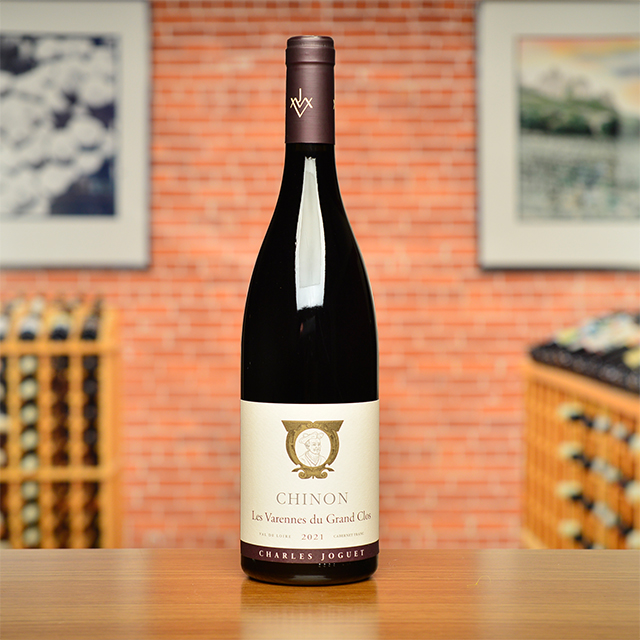
2021 Chinon “Les Varennes du Grand Clos”
France | Loire
With floral aromas and fine-grained tannins, it already showcases its charms.

2019 Chinon “Clos du Chêne Vert”
France | Loire
Chinons from Joguet are known for their firm minerality, but this one is quite charming as well, with plummy black fruit, myrtle, and notes of warm licorice.

2020 Saumur Blanc “L’Échelier”
France | Loire
This dry Chenin Blanc is etched from the white limestone beneath—crystalline, pure, and chiseled.

2020 Chinon “Les Varennes du Grand Clos”
France | Loire
With floral aromas and fine-grained tannins, it already showcases its charms.
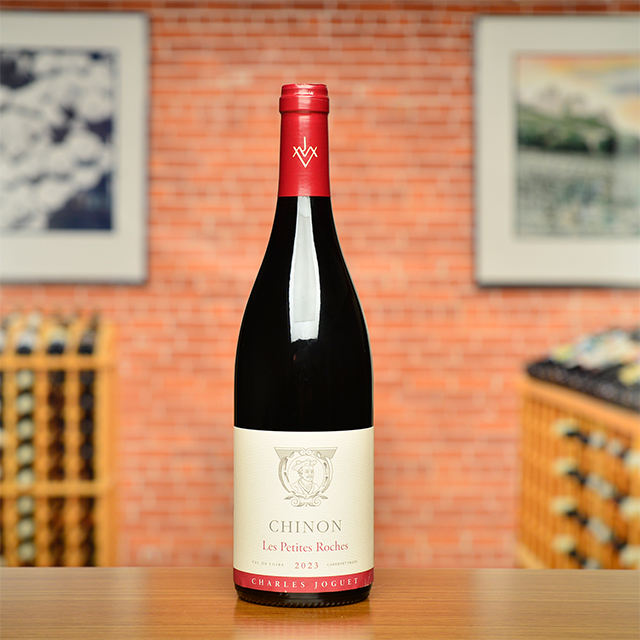
2023 Chinon “Les Petites Roches”
France | Loire
Showing off Cabernet in its most delicate, charming form, rife with aromas of roses, damp earth, and little red berries.

2021 Chinon “Clos de la Dioterie”
France | Loire
Age-worthy red from one of Chinon’s top sites, by a storied domaine.

2021 Chinon Blanc “Les Charmes”
France | Loire
The singularity and beauty of Chenin Blanc really shines with a bit of age, which is what makes this wine so special to enjoy now.
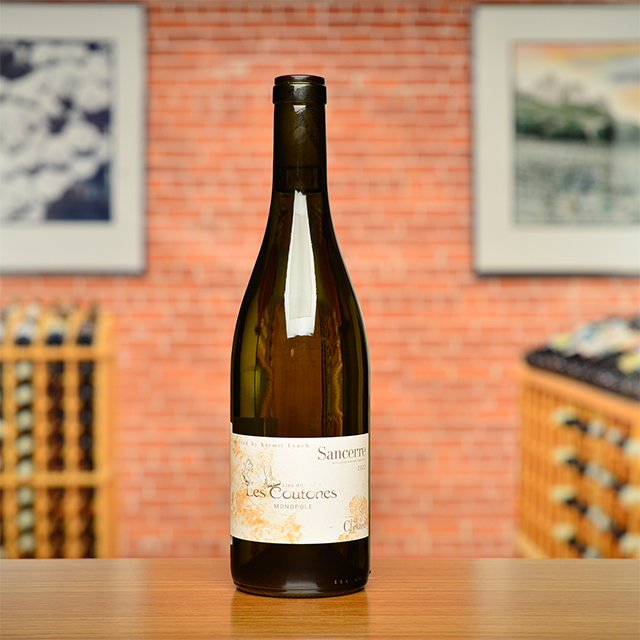
2023 Sancerre “Les Coutones”
France | Loire
A fleshy, full-bodied Sancerre with great freshness and the ability to age in bottle for a few years after release.

2020 Chinon “Clos du Chêne Vert”
France | Loire
Chinons from Joguet are known for their firm minerality, but this one is quite charming as well, with plummy black fruit, myrtle, and notes of warm licorice.
About The Producer
Charles Joguet
About The Region
Loire

The defining feature of the Loire Valley, not surprisingly, is the Loire River. As the longest river in France, spanning more than 600 miles, this river connects seemingly disparate wine regions. Why else would Sancerre, with its Kimmeridgian limestone terroir be connected to Muscadet, an appellation that is 250 miles away?
Secondary in relevance to the historical, climatic, environmental, and cultural importance of the river are the wines and châteaux of the Jardin de la France. The kings and nobility of France built many hundreds of châteaux in the Loire but wine preceded the arrival of the noblesse and has since out-lived them as well.
Diversity abounds in the Loire. The aforementioned Kimmeridgian limestone of Sancerre is also found in Chablis. Chinon, Bourgueil, and Saumur boast the presence of tuffeau, a type of limestone unique to the Loire that has a yellowish tinge and a chalky texture. Savennières has schist, while Muscadet has volcanic, granite, and serpentinite based soils. In addition to geologic diversity, many, grape varieties are grown there too: Cabernet Franc, Chenin Blanc, Sauvignon Blanc, and Melon de Bourgogne are most prevalent, but (to name a few) Pinot Gris, Grolleau, Pinot Noir, Pineau d’Aunis, and Folle Blanche are also planted. These myriad of viticultural influences leads to the high quality production of every type of wine: red, white, rosé, sparkling, and dessert.
Like the Rhône and Provence, some of Kermit’s first imports came from the Loire, most notably the wines of Charles Joguet and Château d’Epiré—two producers who are featured in Kermit’s book Adventures on the Wine Route and with whom we still work today.
More from Loire or France
2024 Coteaux du Loir Blanc
Pascal Janvier France | Loire
2024 Bourgueil Rosé
Domaine de la Chanteleuserie France | Loire
2024 Val de Loire Sauvignon Blanc “Unique”
Domaine du Salvard France | Loire
Vouvray Brut
Champalou France | Loire
2019 Vin de France Rouge Grolleau/Cabernet Franc “Clandestine”
Grange Saint-Sauveur France | Loire
2018 Saumur Blanc “L’Échelier”
Thierry Germain France | Loire
2023 Bourgueil “Cuvée Alouettes”
Domaine de la Chanteleuserie France | Loire
2024 Cheverny
Domaine du Salvard France | Loire
2024 Saumur Blanc “L’Insolite”
Thierry Germain France | Loire
2022 Muscadet Sèvre et Maine “Réserve”
Domaine Michel Brégeon France | Loire
2022 Quincy “Château de Quincy”
Domaine Trotereau France | Loire
2023 Sancerre Rouge “Le Chant de l’Archet”
Daniel Chotard France | Loire
2024 Coteaux du Loir Blanc
Pascal Janvier France | Loire
2024 Bourgueil Rosé
Domaine de la Chanteleuserie France | Loire
2024 Val de Loire Sauvignon Blanc “Unique”
Domaine du Salvard France | Loire
Vouvray Brut
Champalou France | Loire
2019 Vin de France Rouge Grolleau/Cabernet Franc “Clandestine”
Grange Saint-Sauveur France | Loire
2018 Saumur Blanc “L’Échelier”
Thierry Germain France | Loire
2023 Bourgueil “Cuvée Alouettes”
Domaine de la Chanteleuserie France | Loire
2024 Cheverny
Domaine du Salvard France | Loire
2024 Saumur Blanc “L’Insolite”
Thierry Germain France | Loire
2022 Muscadet Sèvre et Maine “Réserve”
Domaine Michel Brégeon France | Loire
2022 Quincy “Château de Quincy”
Domaine Trotereau France | Loire
2023 Sancerre Rouge “Le Chant de l’Archet”
Daniel Chotard France | Loire
Kermit once said...

Kermit once said...
Great winemakers, great terroirs, there is never any hurry. And I no longer buy into this idea of “peak” maturity. Great winemakers, great terroirs, their wines offer different pleasures at different ages.
Inspiring Thirst, page 312










